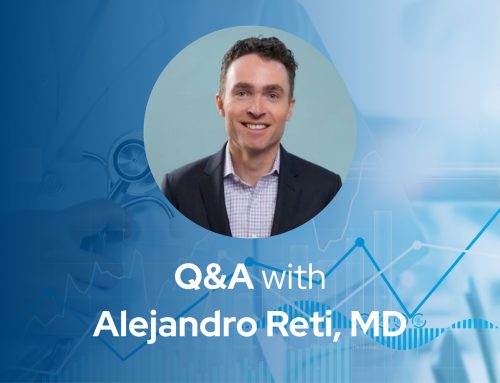
Augmenting Population Health Strategies with AI
The Essential Role of Early Detection in Population Health
Early detection plays a crucial role in population health strategies, key for disease prevention and control. This has led to the development of more advanced techniques and tools for early detection over many years. Standardization of screening tests, such as the colonoscopy for colorectal cancer and mammography for breast cancer, were also important achievements.
- Breast cancer: When detected early, the five-year relative survival rate is nearly 100%, a stark contrast to the 27% survival rate when discovered at a later stage. [1]
- Colorectal cancer: Early detection of colorectal cancer (CRC) increases the survival rate to 90%, compared to just 14% at advanced stages. [2]
Just these two examples underscore the critical nature of early detection in saving lives and improving outcomes. Not only that, such outcomes influence how healthcare organizations structure and design their population health programs.
Augmenting Population Health Strategies with AI
In recent decades, advanced imaging technologies, genetic testing, and biomarker discovery have further enhanced our ability to detect diseases at their earliest stages. And while strides have been made in identifying individuals at risk using the best technology available – true early identification is still fraught with challenges. Silent progression of symptoms, fragmented or missing patient data, limitations in screening tools, and strain on limited provider resources often delay diagnosis.
The groundwork laid by intelligently designed and executed population health programs opens new frontiers for the use of clinical artificial intelligence (AI), enabling predictive analytics to identify disease risks with more precision, and at scale.
Practical Opportunities with Existing Clinical Solutions
The real-world impact on patient outcomes with AI-driven early detection is substantial. In the effort to address colorectal cancer, for instance, AI solutions help identify individuals who are overdue for standard screening and at higher statistical risk for CRC, adenomas, polyps and other lower GI disorders. Studies have shown that by prioritizing just 300 patients identified through AI for extra screening outreach, we could save 7-8 lives.
In the realm of stroke prevention, AI analysis of electrocardiograms can uncover previously undetected atrial fibrillation or flutter, conditions that significantly increase stroke risk. By analyzing 100,000 screening ECGs, Algorithms can identify more than 400 additional patients with these arrythmias, allowing for earlier intervention that could prevent up to 7 strokes.
For diabetes, the statistics are equally compelling. The CDC reports that 23% of American adults with diabetes are unaware they have the disease. AI can sift through vitals, diagnosis history, and previous lab tests to identify patients with undiagnosed diabetes at a rate five times higher than the general population, leading to earlier intervention and management that can prevent severe complications and reduce healthcare costs by about $2,500 per patient annually.
Forecasting Tomorrow: AI’s Pivotal Contribution to the Evolution of Comprehensive Population Health Strategies
The integration of AI into population health initiatives creates a substantial leap forward. It promises better outcomes and lower costs and a shift towards a healthcare system focused on prevention and early intervention. Each patient we diagnose earlier, each life we can save, is a victory for improved public health.
Our vision is a future where we prevent diseases before they happen, where we catch problems early on, and where we safeguard the well-being of patients with insight, innovation, and empathetic care. Together, we can make this vision a reality, ensuring a healthier, brighter future for all.


